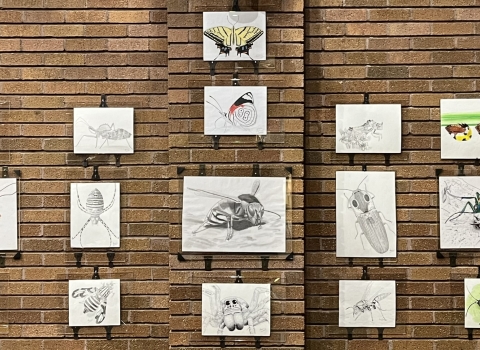The visitor center will be open during normal business hours, except will be closed for the following days: Wednesday, December 24 - Friday, December 26 and Thursday, January 1.
(Español) El centro de visitantes estará abierto durante el horario comercial normal, excepto estos días: 24-26 de diciembre y 1 de enero.

Visitors to Deer Flat National Wildlife Refuge may observe sick or dead waterfowl, due to a potential outbreak of avian cholera and avian influenza. Visitors should not approach or touch any birds that may appear to be dead, sick or are exhibiting abnormal behavior. More information on hunting when avian influenza is present.
(Español) Visitantes del refugio podrán ver aves acuáticas enfermas o muertas, debido a un posible brote de cólera aviar e influenza aviar. Visitantes no deben acercarse ni tocar ninguna ave que pueda parecer muerta, enferma o que muestre un comportamiento anormal. Más información sobre la caza en caso de influenza aviar.
The Idaho Department of Health and Welfare has lifted its health advisory for water bodies affected by cyanobacterial harmful algal blooms (cyanoHABs), which included Lake Lowell. Anglers and hunters should still be cautious as you may be exposed to cyanoHABs which is harmful to people, pets and livestock. For more information, review their latest News Release.
(Español) El Departamento de Salud y Bienestar de Idaho ha levantado su alerta sanitaria para los cuerpos de agua afectados por floraciones de algas nocivas cianobacterianas, entre ellos el Lake Lowell. Pescadores y cazadores deben seguir siendo cautelosos, ya que podrían estar expuestos a algas nocivas, que son perjudiciales para las personas, las mascotas y el ganado. Para más información, consulte su último comunicado de prensa.
Visit Us
National wildlife refuges offer us all a chance to unplug from the stresses of daily life and reconnect with our natural surroundings. With a nearly 9,000-acre lake and more than 10 miles of trails, refuge visitors can easily find an adventure for their experience level. As you visit this wildlife home, be sure to slow down to watch wildlife and look for signs of wildlife like tracks, scat, and nests. Whether you come to fish, boat or swim in Lake Lowell or to hike, bird, hunt, picnic or just watch a sunset in the nearby uplands, there are many opportunities to connect with nature during your visit.
Location and Contact Information
About Us
Deer Flat National Wildlife Refuge is an urban oasis where nature connects people, communities and wildlife. We welcome diverse communities to develop meaningful connections with nature and each other through educational and recreational experiences. The Lake Lowell Unit protects nesting colonies of western and Clark’s grebes and spectacular migratory and wintering concentrations of mallards and Canada geese. The Snake River Islands Unit provides important nesting habitat for ducks, geese, songbirds, herons, egrets and more.
What We Do
The staff and partners at Deer Flat National Wildlife Refuge work year-round to maintain and enhance refuge lands and programs for both wildlife and the community. Our conservation toolbox includes controlling invasive species invasive species
An invasive species is any plant or animal that has spread or been introduced into a new area where they are, or could, cause harm to the environment, economy, or human, animal, or plant health. Their unwelcome presence can destroy ecosystems and cost millions of dollars.
Learn more about invasive species , restoring degraded habitat, creating new habitat, providing artificial nesting habitat, and seasonally or permanently closing some lands to provide undisturbed areas for wildlife.
Our Organization
Our Species
The lake, wetlands, riparian riparian
Definition of riparian habitat or riparian areas.
Learn more about riparian forests, and sagebrush sagebrush
The western United States’ sagebrush country encompasses over 175 million acres of public and private lands. The sagebrush landscape provides many benefits to our rural economies and communities, and it serves as crucial habitat for a diversity of wildlife, including the iconic greater sage-grouse and over 350 other species.
Learn more about sagebrush uplands protected by the refuge provide homes to resident and migratory wildlife and native plants. Just a short drive from the busy Treasure Valley, you can spot bald eagles and other raptors, spectacular concentrations of migrating and wintering waterfowl and western and Clark’s grebes at one of the three largest nesting colonies in Idaho.
Get Involved
Whether you want to further conservation, learn more about nature or share your love of the outdoors, you’ve come to the right place. National wildlife refuges provide many opportunities for you to help your community by doing what you love. National wildlife refuges partner with volunteers, youth groups, landowners, neighbors and residents of urban and coastal communities to make a lasting difference. Find out how you can help make American lands healthier and communities stronger while doing something personally satisfying.







